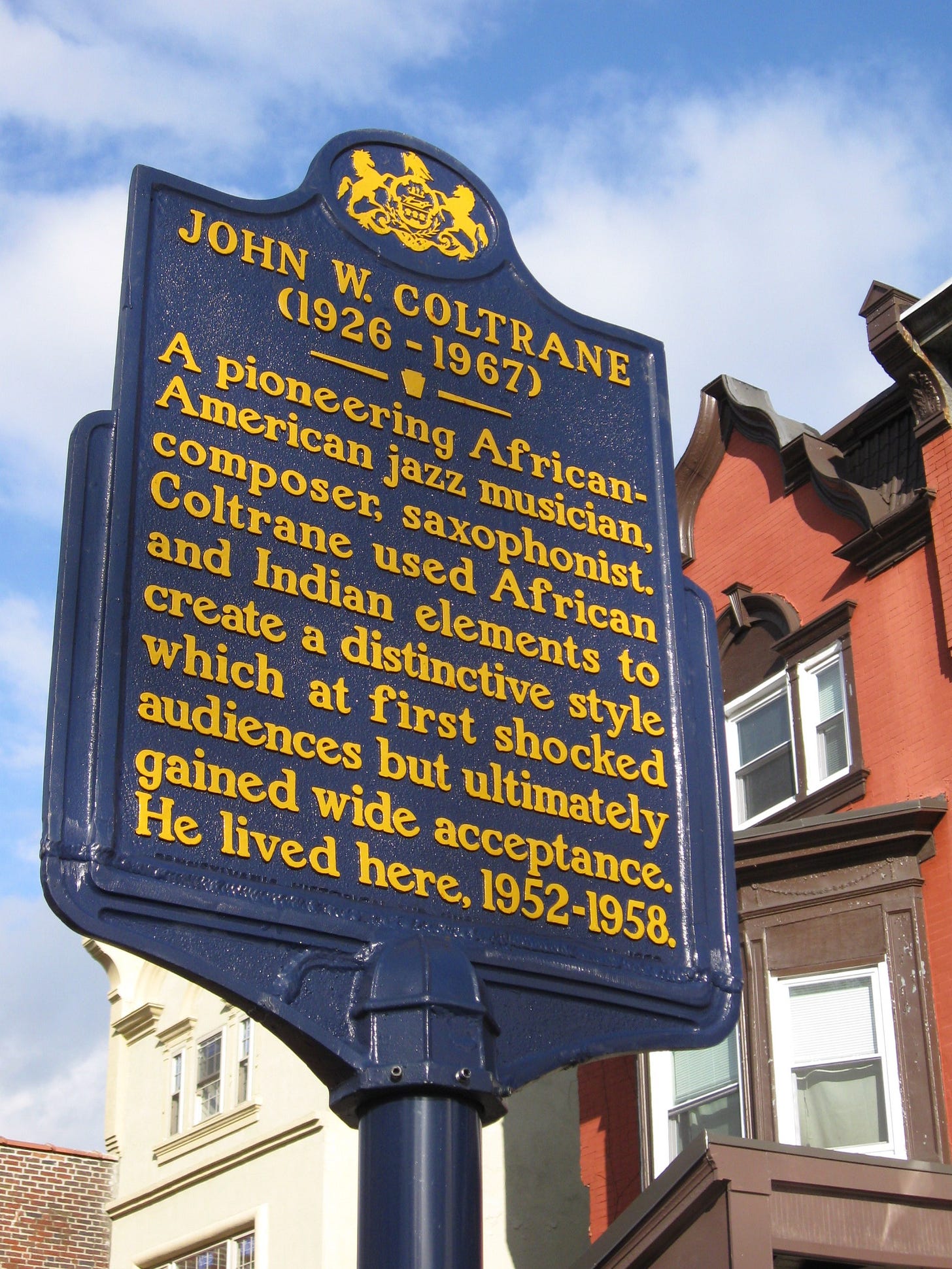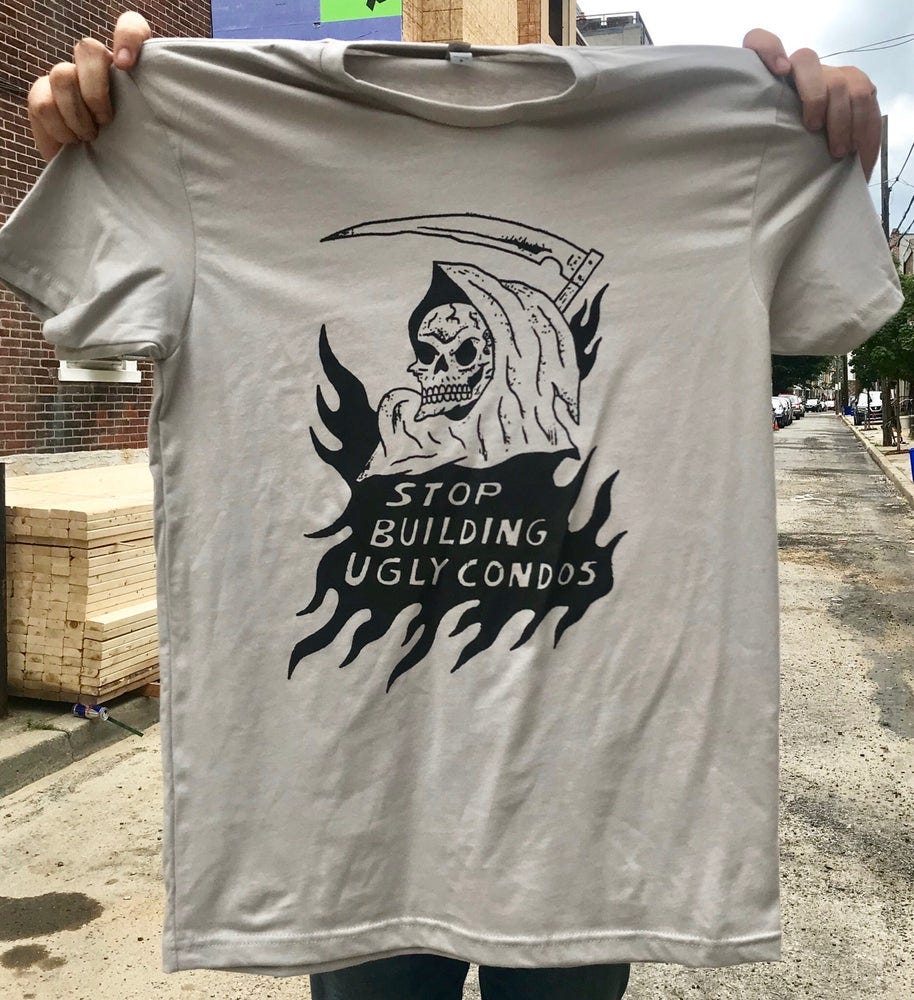If you enjoy the article, please consider “liking” this article or subscribing to Check This Out!
This past week, music history and gentrification made headlines in Philadelphia.
Last Friday, posts started showing up on social media stating that the John Coltrane House was scheduled for demolition this past Wednesday.
Located at 1511 North 33rd Street in the Strawberry Mansion neighborhood, Coltrane lived there for six years in the 1950s. It’s a critical time in his career and is when he met Miles Davis, who would change his musical path.
Davis’s career had taken a hit after his initial success in the 1940s as he battled drug addiction. Ready to return to the scene, Davis, a trumpeter, reached out to Coltrane to play saxophone in what would become known as the “First Great Quintet.”
During this time, Coltrane would also play with the legendary Thelonius Monk and record Blue Train, considered his best album from this period and one of the most essential jazz records.
As it turns out, the Coltrane House isn’t designated for demolition, but the house next door is instead.
The City of Philadelphia’s Historical Commission added the building to its list of historic places in 1984. Just last year, the city also committed to matching funds to restore the house.
The situation isn’t over, though, as it is a rowhouse and shares a wall with the house scheduled to be demolished. The contractor has committed to protecting the property and restoring the wall after completion per city code, but my past life in commercial real estate doesn’t convince me that this will go through without a hitch.
A lot can happen behind the scenes, and I wonder what kind of shoring and permanent structural work will be required.
There’s another house of a jazz legend in Philadelphia that also needs help. In the Germantown neighborhood, the place that the Sun Ra Arkestra has been based out of since 1968 just suffered a collapse and has significant structural damage throughout.
Making the situation even direr, Marshall Allen, the band’s founding saxophonist, is still living there at 96 years old. Locals have come together and are slowly repairing the house through volunteer work, something I’d like to see more of in the money-driven construction industry.
So why has this country elected to allow preservation and restoration of every single place that George Washington may have slept a night at but allows so many historical sites (and entire neighborhoods) for people of color to be demolished?
It’s a rhetorical question but preserving history and culture are crucial components to equality. Who’s to say George Washington is more important to this country’s fabric than John Coltrane or Sun Ra for a large group of folks?
Now that the national spotlight has been shined on the situation, I’m hopeful that the city’s hand has been forced into restoring the property.
The Louis Armstrong House in Queens is an excellent example for Philadelphia to follow. Donated to the City of New York by Armstrong’s wife, Lucille, the house has been lovingly restored to a museum that, during normal times, offers concerts and educational programs. They even hosted a virtual open house this past weekend.
Every city is dealing with gentrification, but history belongs to everyone. As fellow Philly artist Eric Kenney aka Heavy Slime, sums it up:
What’s the favorite place in your town that has been demolished for an overpriced eyesore? How has it affected the neighborhood? Let me know in the comments.








Good story to read about Denver is: https://denverite.com/2017/05/17/destruction-rebirth-16th-street-lodo-three-images-skyline-urban-renewal/